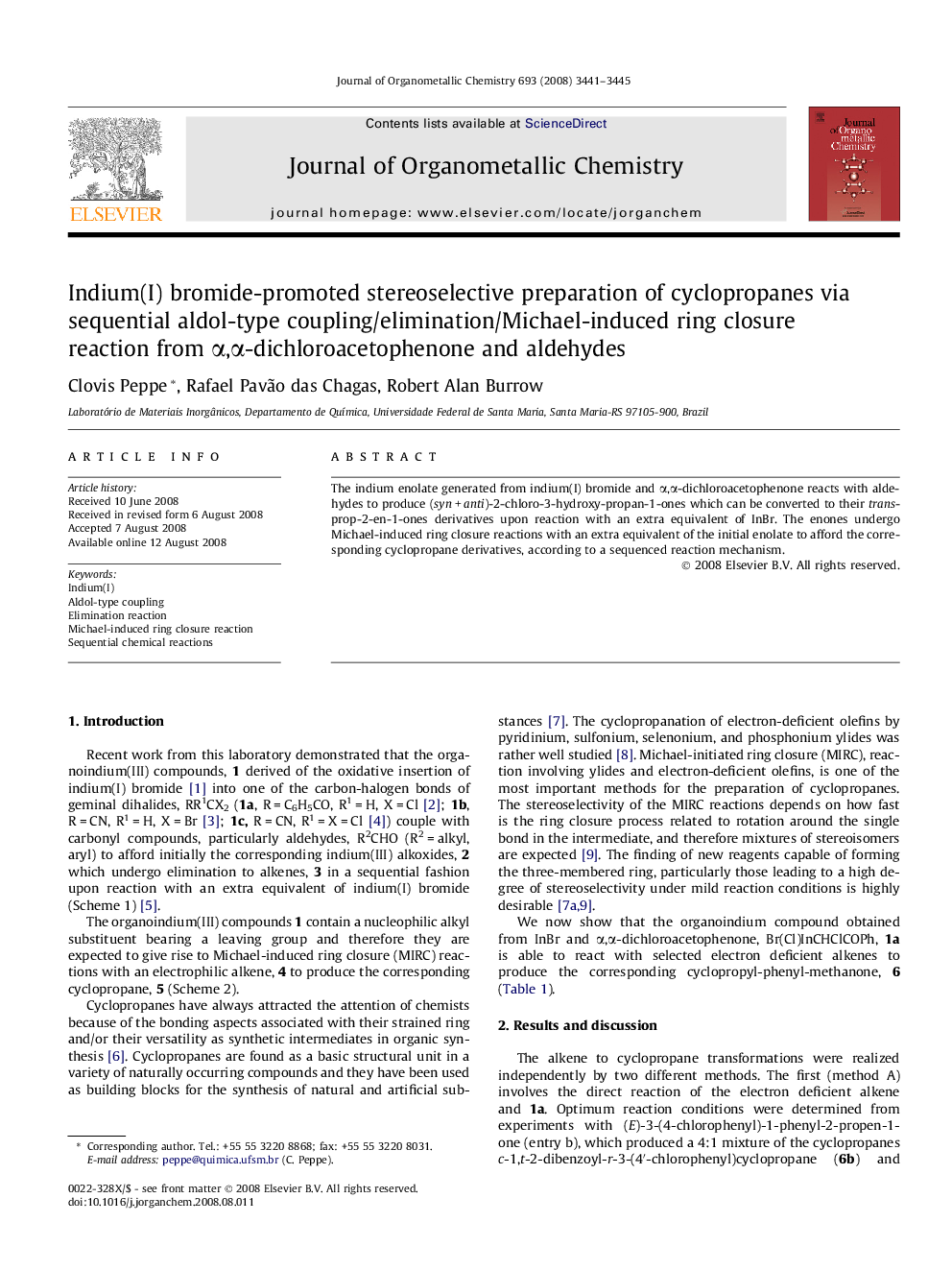| کد مقاله | کد نشریه | سال انتشار | مقاله انگلیسی | نسخه تمام متن |
|---|---|---|---|---|
| 1325637 | 1499947 | 2008 | 5 صفحه PDF | دانلود رایگان |

The indium enolate generated from indium(I) bromide and α,α-dichloroacetophenone reacts with aldehydes to produce (syn + anti)-2-chloro-3-hydroxy-propan-1-ones which can be converted to their trans-prop-2-en-1-ones derivatives upon reaction with an extra equivalent of InBr. The enones undergo Michael-induced ring closure reactions with an extra equivalent of the initial enolate to afford the corresponding cyclopropane derivatives, according to a sequenced reaction mechanism.
The indium enolate generated from indium(I) bromide and α,α-dichloroacetophenone reacts with aldehydes to produce (syn + anti)-2-chloro-3-hydroxy-propan-1-ones which can be converted to their trans-prop-2-en-1-ones derivatives upon reaction with an extra equivalent of InBr. The enones undergo Michael-induced ring closure reactions with an extra equivalent of the initial enolate to afford the corresponding cyclopropane derivatives, according to a sequenced reaction mechanism.Figure optionsDownload as PowerPoint slide
Journal: Journal of Organometallic Chemistry - Volume 693, Issues 21–22, 15 October 2008, Pages 3441–3445